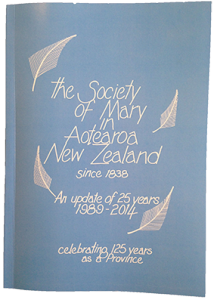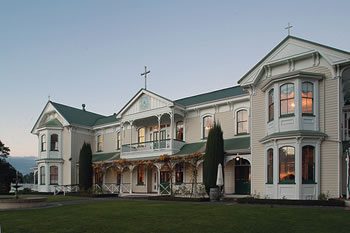Chronicle of Rapid Change for the Society of Mary
A Review
The 125th Jubilee Magazine of the New Zealand Province of the Society of Mary is an absorbing read. It does not attempt to provide an overview of the history of the Society of Mary going back 176 years but rather focuses on the life of the Province over the last 25 years.
Those of us who were in the seminary in the 1970s and 1980s could never have foreseen the future that was in store for the Society of Mary over the following quarter century. If, back then we could have leapt into the year 2014, sat down with a cup of coffee and read this chronicle of rapid change cover to cover, my guess is we would have been astounded.
The last 25 years has seen huge shifts in Catholic life and practice, and in an increasingly secular New Zealand. The extent and speed of the change, particularly as it has impacted on religious vocations, has no doubt been unexpected and bewildering. It has required deep faith, flexible leadership and a willingness to do things differently.
So at one level the story of the Society of Mary over the last 25 years is a story of diminishing numbers and constant adaptation in response to fewer vocations.
But, as this rich and colourful history makes clear, it has equally been a story of faith and courage as the Society of Mary has begun new ministries and attempted to meet pastoral needs in fresh ways with an ageing workforce. All the key ministries the Society has been involved in – Ministry to Maori, parish ministry, education, formation, and spirituality – have undergone radical change.
The character of Marist schools is now maintained by a mainly lay workforce. New, inclusive models of leadership are required in larger, amalgamated parishes. The Society now engages with youth and promotes youth leadership on a broad range of fronts beyond the teaching world, and commitment to Maori has moved from specialised Maori missionaries to a more general walking alongside Maori. This era has also been characterised by new programmes and places of formation and a generous commitment to sending men to overseas missions, including pioneering missionary ventures in Latin America, Pakistan, Thailand and the Philippines.
An adventuring spirit has also been the key requirement in establishing inner city and spirituality ministries in the post-Futuna era. There are many examples of individual apostolates in this book, ranging from a flourishing internet ministry to providing budget advice, to using creative gifts of art and music to communicate Gospel messages.
The defined pathways for living out a Marist vocation that were so clearly prescribed in the past have given way to a more diverse and exploratory approach, as individuals have sought to make full use of their talents and interests in responding to pastoral needs.
This book is part-historic record, part-commentary, part-story and part-family photograph album. The large number of photographs and short blocks of text make it an easy and engaging read. The multiple perspectives of contributers working in various parts of the Marist enterprise enhance the publication greatly.
To view this publication as a whole is to be reminded of the enormous contribution which the Society of Mary has made, and continues to make, to the New Zealand and global Church – so many men across the generations leading lives of genuine service, fuelled by faith. By any measure it is an extraordinary story stretching unbroken across 176 years from the early Marists to our own day.
Ultimately of course it is a faith story, and not one in which success can be defined according to the values of our age. It is easy to get this wrong, especially when the going is smooth, the vocations are flowing, the new buildings are visible, and ‘success’ is obvious for all to see.
As those who follow the example of Jesus, however, we are called to be faithful, not successful. The Society of Mary in Aotearoa New Zealand since 1838, An Update of 25 Years 1989-2014 is a lively account of what it is to be faithful in an era that is surely as challenging as it was for the pioneering French Marists all those years ago.




 Entries(RSS)
Entries(RSS)